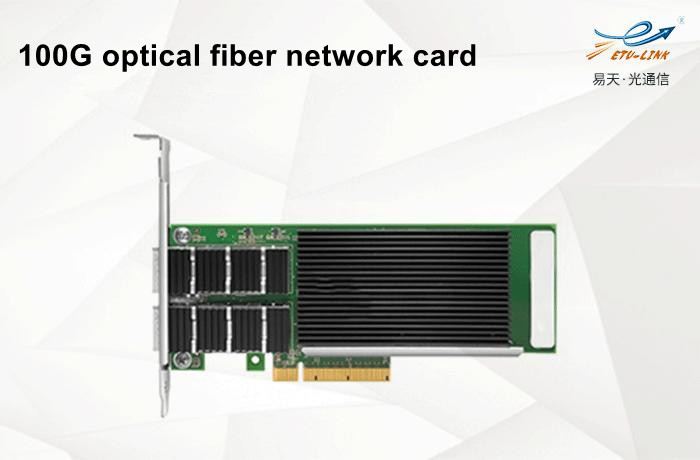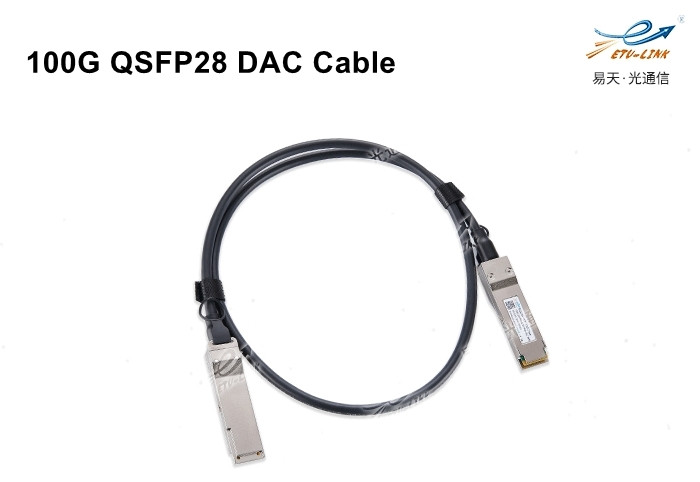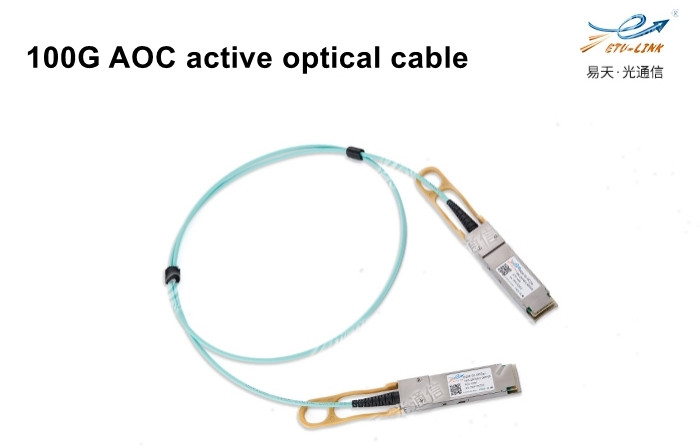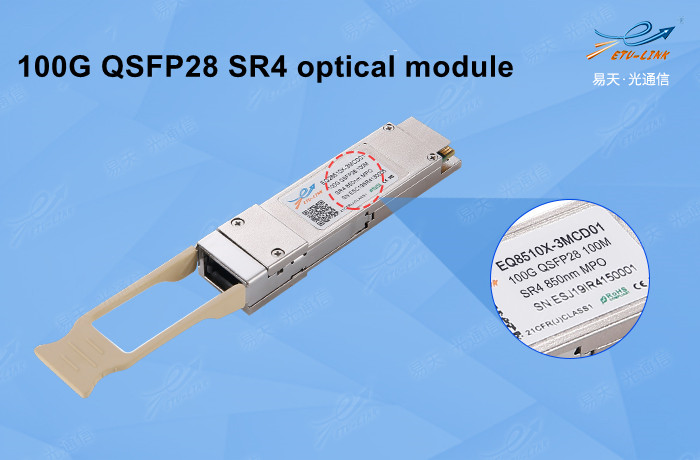
Introduction of 100G optical fiber network card and optical module solution
In the 1990s and early 2000s, network cards were generally used in computers, and they were slowly used in servers and workstations until later. During this period, due to the maturity of wireless technology and the popularization of wireless networks, wireless network cards were gradually widely used on computers. However, due to the reliability of the connection, the wired network card is still the dominant network device that does not need to be moved. In recent years, the industry has been continuously introducing new network cards to meet different Ethernet requirements, such as 100M network cards, Gigabit network cards, 10 Gigabit network cards, 25G network cards, 100G network cards, and so on. In this article, ETU-LINK will take you to understand the 100G optical fiber network card and its solutions.

100G optical fiber network card, also called server network card, is a printed circuit board that can provide network communication functions for the computer. It is usually used as a separate network adapter and inserted into the motherboard slot of the server. At present, the common 100G fiber optic network cards on the market are single-port and dual-port. Generally speaking, you can choose a single-port 100G network card. However, considering the security and reliability of the network, a dual-port 100G network card is also a good choice, which can provide redundancy to avoid network paralysis caused by network card failure. When we choose a 100G fiber optic network card, it is best to choose a 100G fiber optic network card that supports hot swap, because this fiber optic network card can be installed and removed without shutting down the system. Meanwhile, the faulty network card can be replaced immediately, to the greatest extent reduce downtime.
In addition, because each server supports different operating systems, such as Windows Server 2008 R2, Windows Server 2012, etc., you need to determine whether it can support the server's operating system before purchasing a 100G network card.
The 100G optical fiber network card can be used with 100G QSFP28 DAC high-speed cables, 100G QSFP28 AOC active optical cables, 100G QSFP28 optical modules and other optical communication products for connection and transmission. The transmission distance of the 100G DAC high-speed cable is within 7 meters. Because the high-speed cable uses electrical signal transmission, the internal components of the DAC do not contain various expensive optical components, and the price of copper cables is lower than that of optical cables, as a result, the high-speed cable has a very high cost performance in the short-distance transmission scheme.

100G AOC active optical cable (MM OM4) can transmit up to 300 meters, which is longer than the transmission distance of DAC, because DAC high-speed cable belongs to electrical signal transmission, and the electrical signal will be severely attenuated during the transmission process. Therefore, the transmission distance of the DAC is limited. But the AOC active optical cable is for optical signal transmission, and the optical signal suffers very little attenuation during the transmission process, so the transmission distance of AOC is longer than that of DAC.

If the device spacing is within 100 meters, you can use 100G QSFP28 SR4 optical modules. The 100G QSFP28 SR4 optical module is a parallel optical module with 4 independent transmitting and receiving channels. The transmission rate of each channel is 25G. The interface type is MPO. The maximum transmission distance can be up to 100 meters by collocation with 12-core MPO multi-mode patch cord OM3.
From the perspective of cost, 100G QSFP28 DAC high-speed cable is the preferred short-distance transmission solution for device spacing within 7 meters. From the perspective of transmission performance, 100G AOC active optical cables can be used for short-distance transmission. Active optical cables have a faster response speed than high-speed cables, and the optical cables are not subject to electromagnetic interference and have low signal attenuation, so the overall transmission performance of active optical cable will be much better than high-speed cable. If the transmission distance of the device is within 100 meters, a pair of 100G QSFP28 SR4 optical modules can be used with 12-core MPO multi-mode OM3 patch cords. This solution has both transmission performance and cost-effectiveness.

The above are the three commonly used solutions for 100G optical fiber network cards recommended by ETU-LINK. As data centers tend to develop toward 400G, the connection between servers and switches will tend to develop 100G, and 100G network cards will be used in the next generation of data centers, playing an indispensable role. At present, vendors such as Intel and Mellanox have successively introduced 100G network cards.
Categories
New Blog
Tags
© Copyright: 2025 ETU-Link Technology CO ., LTD All Rights Reserved.

IPv6 network supported
Friendly Links:
易天官网